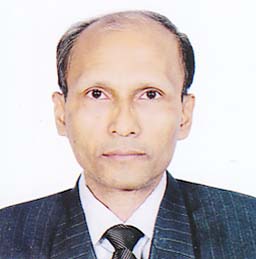
Masum Billah :
Where do we stand in terms of removing illiteracy, let alone quality of education even though we have already crossed more than fifty years of our independence? Bangladesh Statistical Bureau (BBS) has recently published a report that shows we have so far achieved 76.8 percent literacy.
However, if we consider reading, understanding, writing and counting of the people, this figure will further be squeezed.
Socioeconomic and demographic survey – 2023 of BBS shows that the 25 percent people of 18 districts of Bangladesh still cannot read and write mainly because of poverty.
Moreover, infrastructural and manpower shortage, weakness to implement projects at the field level and lack of coordination among different entities can be held responsible for this.
Banderban, the hill district, stands top in the illiteracy rate and poverty scene also figures here the highest.
Then comes the districts of Jamalpur, Sherpur and Netrokona under Mymensingh division and the northern district of Kurigram. Where do we stand in the race to achieve the SDG by 2030?
The children who enroll in primary schools drop out around 14 percent before the completion of primary education circle that further expands in secondary level with the figure of 36 percent.
The number of population between the 5 and 24 years amounts to 6 crore 37 lakh whose 59.28 percent is in education.
The government took several steps to increase the number of literate people. However, after the projects taken up to remove illiteracy the results were frustrating.
There was no relevant continuity, coordination, proper feedback and skillful management to run the projects.
Currently, literacy means the ability to read Bengali, to explain various things orally and in written, maintain communication and the ability to count.
One research of BIDS says though many children go to schools, they don’t acquire these qualities means they remain illiterate.
The children are supposed to learn alphabets and count till 20 even in pre-primary level. However, in grade three and four many students cannot read Bengali and find problems to identity the symbols of mathematics.
Even worse is, they automatically get promoted to the next higher classes and reach the last stage of secondary level when still they show almost the same level of poverty in reading, writing and other expected areas.
This situation has gripped the entire nation ranging from the remotest parts of the villages to many institutions of the city.
No tangible and fruitful steps have yet been taken rather with highest expectation new curriculum has been introduced without giving any importance to the root level problems.

BRAC, the largest NGO in the world introduced a unique model since 1985 for increasing the number of literacy’s in the country keeping its footprint in hard-to-reach areas where government efforts prove zero or unreachable.
One teacher, one classroom, completing the primary circle in four years in a real playful atmosphere and the same teacher keeps with the children from grade to five.
They were not taught traditionally rather they learnt through fun, games, songs and recitation, drawing and dancing. Several million children were thus emancipated from the curse of illiteracy.
Since 1997 a sub sector was developed that was named PEDP-1 fully controlled by the government and the participation of the NGOs was of little importance and since then rainy days came to the poor children and they have still been deprived of their basic rights to be literate and receive quality education.
Since PEDP-1 to PEDP-4 till 2024 saw the expenditure of 20 billion dollars with extremely poor results.
The projects just satisfied the government officials depriving the real change in the field. The children who enrolled in schools could not read, write or count, just projects started and continued till the last date and another project came with a huge amount of dollars.
‘Reaching Out of School Project’ has been renamed as Second Chance Education keeping the entire control in the hands of BNFE. As they don’t have any effective mechanism to reach the really needy children, they engaged the NGOs.
But NGOs could not work as per their own plan and strategy. This traditional attitude of the government agencies could not bring any positive results for this project.
I had the opportunity to work for BRAC Education for eighteen years five months that gave me ample opportunity to learn and see the entire situation very closely.
The BNFE officials’ field visit was purposive and no quality and effective strategic discussion was there. Even they engaged the small NGOs who don’t have experience and ability to deal with the affair.
Question raises how those NGOs got the opportunity and BNFE officials’ huge demand to pay field visits was really difficult for the small NGOs to comply with. However, they satisfied their demands by keeping the basic purpose of the project away.
It is true that the rate of illiteracy has increased compared to the previous year’s even though the quality remains a big question. The number of people who have not visited school in their life amounts to more than 30 million that shows the 17.47 percent of the total population.
Those who have gone to school but could not complete grade one account for four and a half lakh and around two and a half crore people could not pass the primary circle. We need to raise the literacy rate hundred percent to maintain quality to make our independence meaningful for the nation.
The available strength of the country must be utilized to banish all sorts of egotism and bridging the gaps lying between government and non-government sectors.
(The author is President, English Teachers’ Association of Bangladesh (ETAB) Cell:01714-091431, Email: [email protected])
